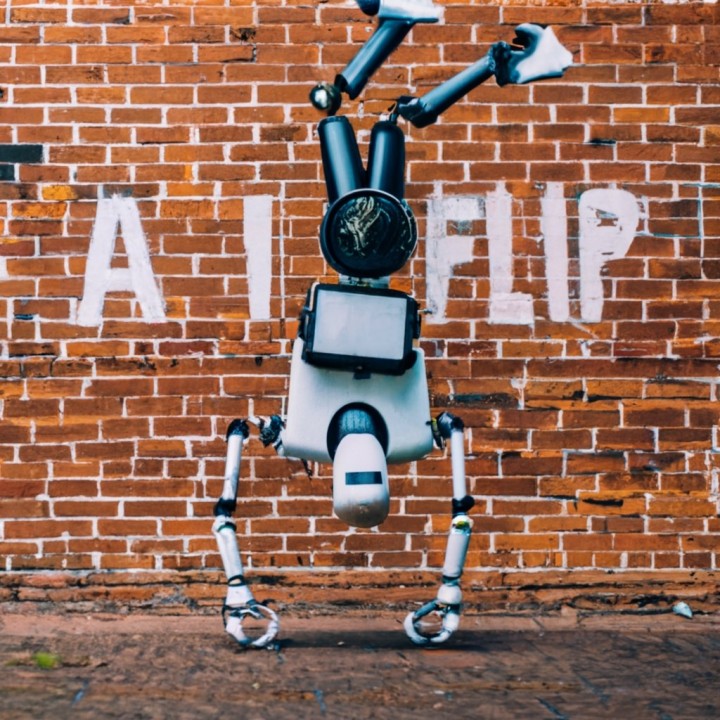
AI Assignment Flip - 10 Examples
We’ve all heard about the “Flipped Classroom.” How about the AI Assignment Filp? This descriptor came to me as I was talking with some faculty about reimagining their fall online assignments BECAUSE of AI and WITH AI. (When I use the term AI here, I’m talking about Generative AI Large Language Models like ChatGPT). First, we need to reconsider how assignments might change BECAUSE AI is a thing and students are using this thing and we can’t detect this thing. So, adjustments might include having students show more work, students doing video responses, breaking long papers into smaller chunks, making assignments more connected to real life/experiences, etc. Second, we need to reconsider how to reimagine our assignments WITH AI. How can we do an AI Assignment Flip, flipping the assignment on its back by encouraging the transparent use of AI to do part of the assignment? Multiple goals here include increasing transparency and conversation around the use of AI, shifting students into the role of AI understanding and mastery, and elevating their critical and higher-order thinking. Here are 10 AI Assignment Flip examples below.
(Full disclosure, ChatGPT-4 and I brainstormed around a few of these ideas, but trying to model good use, I refined and edited anything from AI).
Paper Flip: Choose an AI and have it write the following paper (normal instructions). Now, write a paragraph critiquing the pros and cons, errors and truths of the paper. How was the argument, etc.
Double Paper Flip: Have two different AI LLMs write the same paper. Students compare and contrast and then pick a winner and why.
Solution Rank: Take a problem-based assignment. Instead of the student solving the problem, have the student get AI to come up with 3 solutions. The student then ranks the solutions from best to worst and explains why.
Solution Rank Plus: Same as above, but then the student adds one more solution to the list. They also rank their own solution and explain their thinking process.
AI Peer Review: The student writes the paper per instructions. The student uses AI to critique the paper, asking specific questions about logical flow, grammar, how to make the argument clearer, and AI’s impression of the tone. The student makes improvements based on the suggestions. All parts are turned in for a grade (the original paper, the AI suggestions, and the final paper).
Student Rewrite: AI writes the paper, the student rewrites it to make it better (knowing AI’s big issues with accuracy, flowery language, and lack of authentic references). Both papers are submitted with the big changes highlighted in the student’s paper.
Peer-Review Partner Flip: AI writes a paper on the given topic and guidelines. The student then plays the role of a peer reviewer, evaluating the paper for logical flow, strength of the ideas, coherence, and academic rigor. Finally, the student writes a reflective paragraph discussing how playing the role of a reviewer has impacted their understanding of academic writing..
AI Presentation Improvement: Instead of creating a presentation, the student uses AI tools to generate a set of slides on a given topic (this could either be in bullet points or using an AI presentation program). The student then reviews the slides, noting what was effective and what wasn't. They revise the slides to create a more effective presentation and write a reflection on the experience, highlighting the elements that the AI failed to capture.
AI Debater's Delight: The student selects an opinion-based topic and uses an AI to generate arguments for both sides. They evaluate the quality and rigor of the arguments produced and decide which side "won.” Finally, the student proposes counterarguments to challenge the AI’s points, identifying any logical fallacies or unsupported claims made by the AI.
AI Rapper’s Delight: Same as above, but in the same chat, the student asks for AI to reform the arguments into a back-and-forth rap battle. The student then decides who won the rap battle and why. The prompt might go something like this:
Now, could you reform these arguments in a creative back-and-forth rap battle between two rappers: DJChatsalot (for government healthcare) and MCGPT (against government healthcare).
(If you would like to see the results for #10, you can see an example here: https://chat.openai.com/share/0b2989f2-e554-4c2f-be54-44861da55577 )
I hope these ideas and examples help spur deeper learning and more transparent conversation about AI with your students. I'm sure you will come up with great ideas on your own and in your own context as you "AI Flip" your classroom.
Cognitive developmental scientist- SELLING REAL ESTATE SMARTER. #PLAYROOM #NYC #MA BUILDINGS BABIES BIOPHILIA Tricia@SerenePowers.com;347 266 0923; Full Prof; Research Ambassador 🇩🇪 ; Germany; ZWIFLY®; AisforBanana®
4moGreat ideas. Thanks for sharing!
Senior Research Education Analyst at RTI International
7moThese are some great ideas. Thanks for sharing them.
Assistant Professor, PhD, LCMHCS (NC), LPCC-S (KY)
7moThanks for sharing these practical instructional ideas. The rap had me smiling, very creative prompts!
Education Writer & Producer of The Brighter Side of Education podcast
8moInsightful article. Great ideas! Thank you for sharing!
Instructional Coach
8moA lot of these suggestions get to the ever elusive evaluation skill. Thanks for sharing!